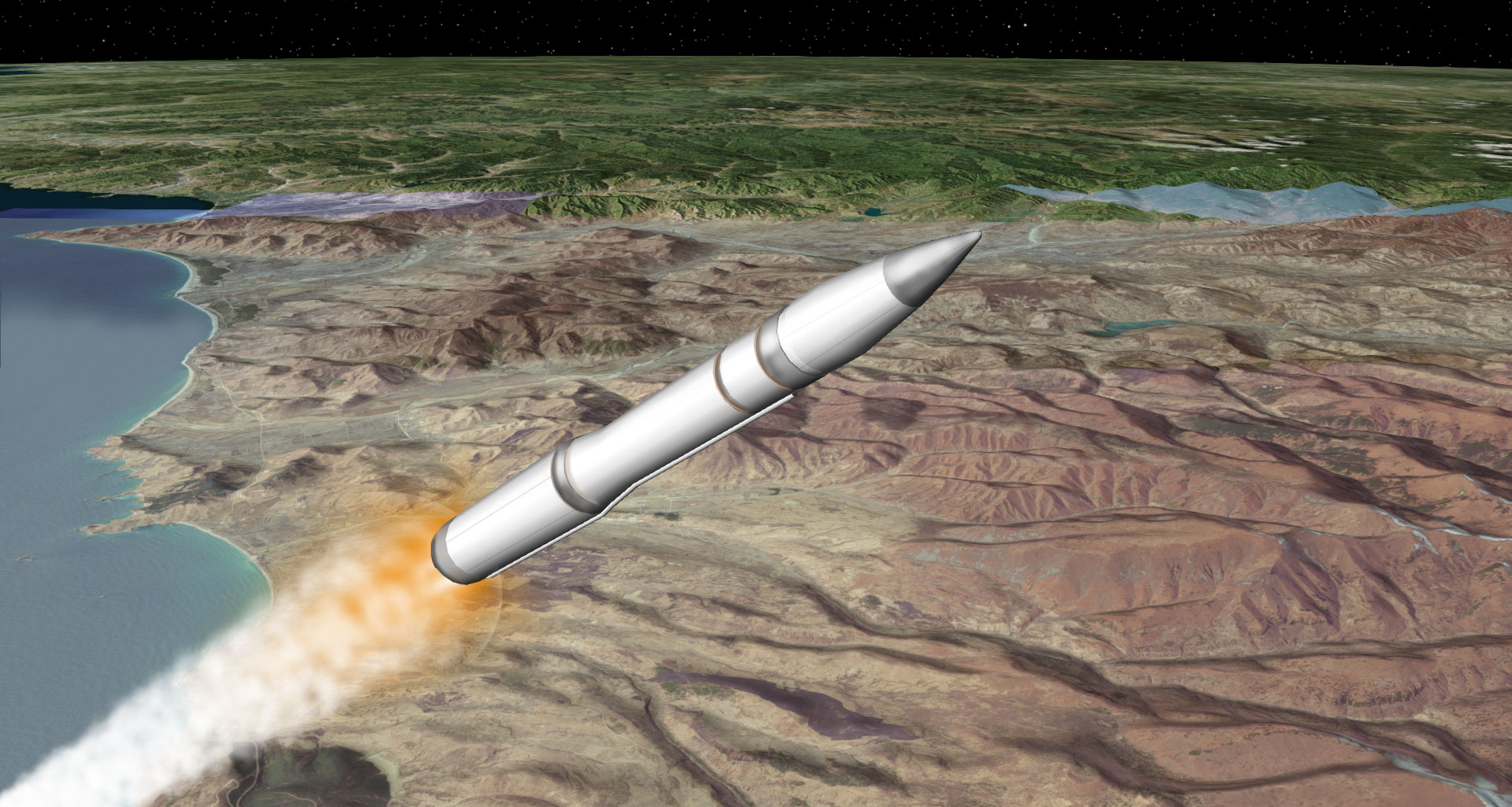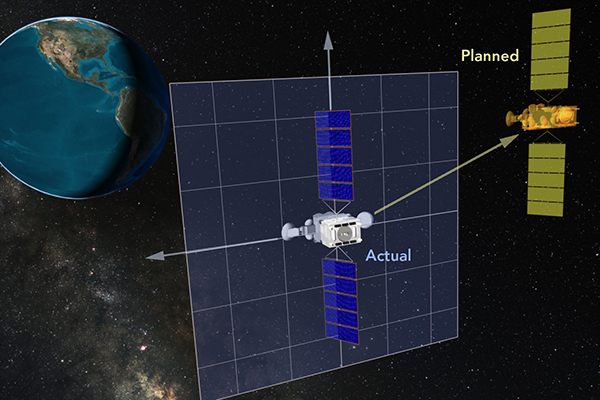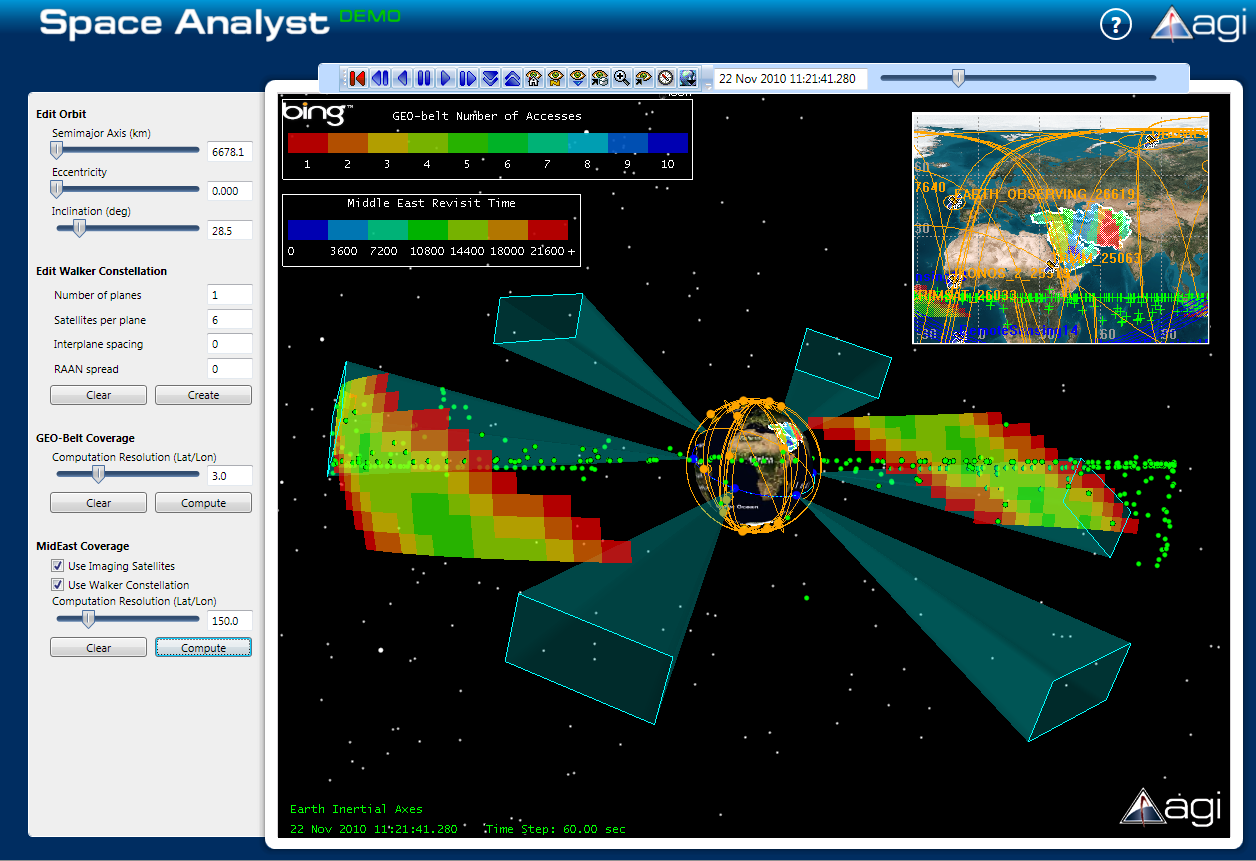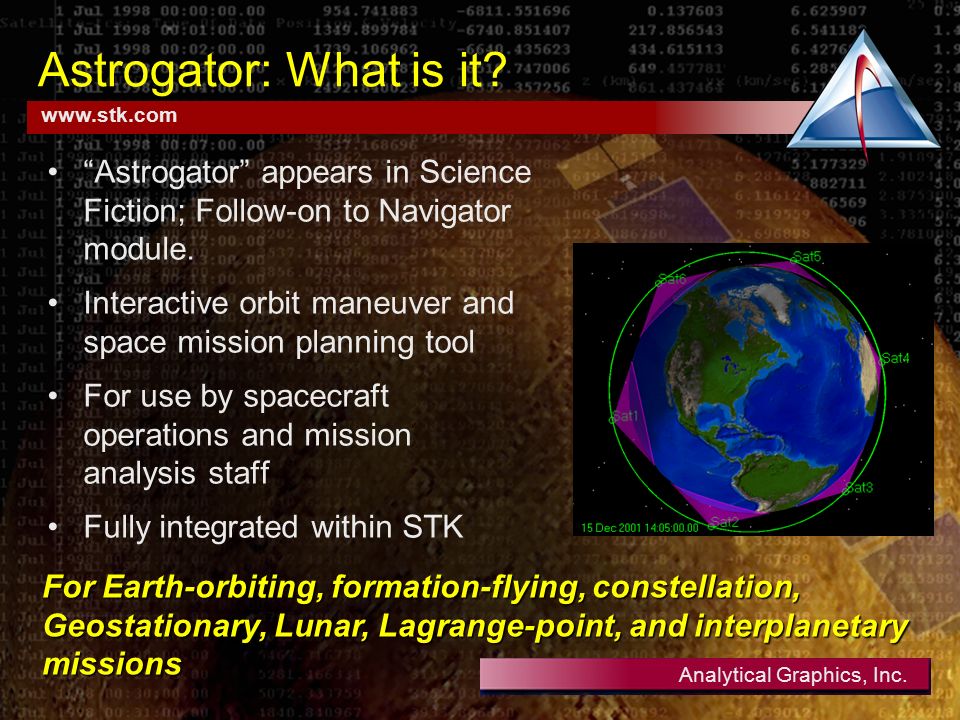Traditional systems engineering approaches to air systems design have been upended by two trends – increasing complexity and accelerating delivery timelines. Digital mission engineering is essential to these new challenges, enabling a system integrator to redirect work from physical systems to their logical representations.
Space systems are exceptionally complex, dynamic, and often unpredictable. To design and execute a successful mission, you need to integrate information and models from multiple domains and then simulate and analyze their performance in the variable conditions that can occur in space and on land. With so much to consider, you don’t just need the right people. You need the right software – a tool that helps your experts plan, design, develop, and operate efficiently. Before the mission begins, you need to identify challenges early in the life cycle. Reduce costs and accelerate your schedule by learning about problems that will be, before they become problems that are.
After launch, you need to quickly detect and diagnose anomalies. The same analytical and visualization platform that whisked your mission through planning and design extends to its operational phase. Maintain safe operations and maximize the return from your mission with accurate analytical modeling.
Satellite tool kit (abbr. STK) is a professional space-analysis software widely used in all phases of a space system life cycle. The simulation of STK is efficient and accurate relatively. Systems Tool Kit (formerly Satellite Tool Kit), is a physics-based software package from Analytical Graphics, Inc. that allows engineers and scientists to perform complex analyses of ground, sea, air, and space platforms, and share results in one integrated environment. AGI’s Systems Tool Kit (STK) is a proven digital mission engineering software for high-fidelity modeling, simulation and analysis of complex missions and systems.
Systems Tool Kit (STK) enables engineers and scientists to complete complex analytical exercises, design systems architecture, carry out modelling or simulations of ground, sea, air, and space platforms and share the results in one integrated environment. On top of its applications, STK Astrogator and STK SOLIS, are especially useful and valuable to engineers and scientists involved in missions where spacecraft operations and critical space assets must make precise manoeuvres.
STK was first adopted by the aerospace community for orbit analysis and access calculations (when a satellite can see a ground-station or image target), but as the software was expanded, more modules were added that included the ability to perform calculations for communications systems, radar, interplanetary missions and orbit collision avoidance. STK provides proven tools and environment for satellite mission designers and operators to analyze complex interactions in systems.

Systems Tool Kit® (STK), a 2D and 3D modeling environment, is now used by engineers, mission analysts, operators, and decision-makers from more than 700 global organizations. These users model complex systems such as aircraft, satellites, ground vehicles, and their sensors to evaluate their performance in real or simulated time. It can simulate intended missions and communicate the results with reports, graphs, and 3D animations. STK is used in government, commercial, and defense applications around the world. Clients of AGI are organizations such as NASA, ESA, CNES, DLR, Boeing, JAXA, ISRO, Lockheed Martin, Northrop Grumman, Airbus, The US DoD, and Civil Air Patrol.
The addition of 3D viewing capabilities led to the adoption of the tool by military users for real-time visualization of air, land and sea forces as well as the space component. STK has also been used by various news organizations to graphically depict current events to a wider audience, including the deorbit of Russia’s Mir Space Station, the Space Shuttle Columbia disaster, the Iridium/Cosmos collision, the asteroid 2012 DA14 close approach and various North Korea missile tests.

Transformation has come to air system operations, too. Accelerating the Observe, Orient, Decide, Act (OODA) loop demands more automation and less human intervention. A digital mission operations approach provides critical breathing room by defining a tailored operating picture that comprises all the available, authoritative data. AGI’s digital mission engineering and operations software tools are packed with air-specific capabilities to shorten development cycles, streamline sustainment efforts, and enhance situational awareness. Connect model-based engineering to our mission analysis platform and achieve unrivaled speed.

Analytical Graphics, Inc. (AGI) won a contract from Lockheed Martin Aeronautics to deliver a test and evaluation integrated solution for the F-35 Lightning II program based on its Systems Tool Kit (STK) software. AGI engineers worked with Lockheed Martin and the JSF Integrated Test Force (ITF) to demonstrate the AGI software’s capability to enhance the efficiency and effectiveness of the test planning, test execution, and post-flight analysis process. Improving these processes enhance test quality and schedule execution and also reduce test program costs.
STK Software technology and Interface
At the core of STK is a geometry engine for determining the time-dynamic position and attitude of objects (“assets”), and the spatial relationships among the objects under consideration including their relationships or accesses given a number of complex, simultaneous constraining conditions. STK has been developed since 1989 as a commercial off the shelf software tool. Originally created to solve problems involving Earth-orbiting satellites, it is now used in the aerospace and defense communities and for many other applications.
The STK interface is a standard GUI display with customizable toolbars and dockable maps and 3D viewports. All analysis can be done through mouse and keyboard interaction. In addition, there is a scripting interface named Connect that enables STK to act within a client/server environment (via TCP/IP) and is language independent. Users on Windows have the option of using STK programatically via OLE automation.
Each analysis or design space within STK is called a scenario. Each system in STK is modeled with a hierarchy of objects, with the highest level object being a Scenario. A scenario will containnumerous parent objects and each parent object may include numerous child objects. Within each scenario any number of satellites, aircraft, targets, ships, communications systems or other objects can be created. STK can
analyze relationships between two or more objects. These relationships can include: line of sight, position, velocity, communication duration or range to name a few.
Each scenario defines the default analysis time period and base units which are passed to all parent and child objects included in the scenario. All of these properties can be overridden for each child object individually, as necessary. Only one scenario may exist at any one time, although data can be exported and reused in subsequent analyses.
The properties of each object can be individually modified to fit the needs of the system being modeled, allowing for different coordinate systems, units or analysis time periods for each object. STK delivers flexibility in coordinate system definition by converting from or to any coordinate system with equal accuracy. This flexibility allows users to define objects in the most appropriate coordinate system while maintaining a relationship with other objects.
STK also determines dynamic spatial relationships among all of the assets, or objects, under consideration including the quality of those relationships or accesses given a number of complex, simultaneous constraining conditions. Additional flexibility on modeling the position, velocity and orientation of moving objects is provided to the user by allowing analysis using simple algorithms and fundamental equations to emulate ideal motion, or using high fidelity integrators and force models to generate realistic trajectories.
For each object within a scenario, various reports and graphics (both static and dynamic) may be created. Relative parameters, between one object and another can also be reported and the effect of real-world restrictions (constraints) enabled so that more accurate reporting is obtained. Through the use of the constellation and chains objects, multiple child objects may be grouped together and the multipath interactions between them investigated. AGI also offers software development kits for embedding STK capabilities into third-party applications or creating new applications based on AGI technology.
STK can be embedded within another application (as an ActiveX component) or controlled from an external application (through TCP/IP or Component Object Model (COM)). Both integration techniques can make use of the connect scripting language to accomplish this task. There is also an object model for more “programmer oriented” integration methodologies. STK can be driven from a script that is run from the STK internal web browser in the free version of the tool. To control STK from an external source, or embed STK in another application requires the STK/Integration module.
Orbit Determination Tool Kit (ODTK)
Orbit Determination Tool Kit (ODTK) is commercial software for geocentric spacecraft orbit determination and analysis from Analytical Graphics, Inc. ODTK employs an established algorithm for sequential orbit determination, first published by Wright (1981) and used by the General Electric Company for satellite operations soon thereafter.

Its key features include a tracking-data simulator, an optimal (Kalman-like) sequential filter, and a sequential fixed-interval smoother. Functionality includes autonomous measurement editing, customizable reporting and graphing, imultaneous multiple-satellite estimation, and modeling of time-varying system biases. ODTK’s filter/smoother can estimate the orbits of multiple satellites, their ballistic coefficients and/or solar radiation pressure coefficients, adjust the uncertain priors in ground-based and space-based tracking facilities, calibrate maneuvers, and solve for time-varying measurement biases, transponder biases, and atmospheric density corrections – all simultaneously.
This is relevant to missions that combine data from multiple satellites or tracking systems, such as global navigation satellite systems
(GNSS), formation flying, geodesy, geolocation, cross-linked tracking, satellite-tosatellite tracking, and intelligence activities where the relative errors between ephemerides are usually important. Given sufficient tracking data, ODTK’s filter can successfully recover the orbits of maneuvering satellites.
ODTK Version 5 adds two significant capabilities: a broad operational capability for maintaining global navigation satellite systems such as the US Global Positioning System, and the ability to refine location estimates for poorly known emission sources using time difference-of-arrival and frequency difference-of-arrival measurement
STK benefits in Space Situational Awareness
The large number of debris around Earth is a risk for the safety of operational satellites. Any of debris objects can cause harm to an operational spacecraft, where a collision with a 10-cm object could entail a catastrophic fragmentation, a 1-cm object will most likely disable a spacecraft and penetrate the satellite shields, and a 1-mm object could destroy sub-systems on board a spacecraft. The space is also becoming increasingly militarized many countries are developing killer microsatellites and other antisatellite weapons (ASAT) that could be used to damage other satellites. There is also thrust on space robots which can perform repair of satellites and which could also put to deorbit adversary’s satellites. They could provide complete awareness of adversary’s activities in space so that one can take counter actions.

Space Situational Awareness entails detecting, tracking, and identifying all natural and artificial space objects, energy and particle fluxes in Earth orbit using a network of sensors and systems. This has long been synonymous with catalog maintenance. While catalog maintenance is a part of the SSA mission set, SSA enables the continuous preparation of the battlespace in order to fight and win a war in space. Simply put, SSA is Space Battle Management. Like the air domain, there is a daily mission of air traffic control and a wartime mission of Air Battle Management. To ensure effective SSA, sensors need access to intelligence, flexible tasking, rapid decision making, and integration between platforms, says USAF.
More and more, spacecraft simulation is playing a vital role in space missions. Given the time and sheer expense of designing, constructing and launching spacecraft, it is critical that engineers can minimise margins of error. At the same time, the overcrowded environment of space makes those challenges more acute.It makes sense, therefore, to be able to plan in detail on the ground, using sophisticated modelling, visualisation and simulation software. Those applications provide detailed and accurate analytics to help ensure the success and safety of space missions.
STK provides the essential simulation, modelling, visualisation and analytical capabilities to support a new generation of autonomous and semi-autonomous spacecraft charged with carrying out delicate and precise manoeuvres. As more items and debris have appeared in space, SSA technology has had to evolve so it can track and catalogue these elements effectively. Much of this advancement centres on the management and interpretation of data. SSA relies on measurements from satellites themselves and from ground radar data but also increasingly, from simulation and modelling. Systems Took Kit (STK) can work with different data sources as well as using data for visualisation and simulation. It enables users to deal with complexities and challenges arising from spacecraft operations and the management of space assets.
Performing a simulation within an STK application suite also means operators can follow up with a further analysis of communication links, radio interference and lighting conditions. It helps builds a complete picture while accumulating knowledge to assist with planning space missions as accurately as possible.
Precise manoeuvrability is essential for spacecraft operations. It involves various critical aspects including engine control, fuel use and overall management of the spacecraft. Refining advanced manoeuvring and perching techniques as part of rendezvous and proximity operations is made easier by modelling software like STK. The STK software can support proximity operations including docking, perch and stare and other manoeuvres along with enabling space-based surveillance and operational satellite modelling.
Proximity operations are important because they allow spacecraft to inspect, repair and monitor other space assets. Modelling provides opportunities for scientists, engineers, operators and commanders to better understand a spacecraft’s movements and to visualise their trajectories. That is particularly important with regards to foreign spacecraft which, without the appropriate analysis and knowledge, can pose a hazard to other objects in orbit.
STK Astrogator
STK Astrogator is ideal for interactive spacecraft manoeuvring and designing trajectories. The application STK Astrogator supports trajectory design for spacecraft and interactive simulation of manoeuvres. That makes it a perfect planning tool for space missions. For spacecraft trajectory, it has a dedicated Mission Control Sequence that can define an entire space mission, providing a visualisation of the different segments involved. These include the craft’s initial and launch states, its manoeuvres and sequencing. It can accommodate finite, impulsive and optimal finite modelling for rendezvous and proximity operations, low thrust, interplanetary travel and station keeping.

STK Astrogator uses the following flight-proven algorithms: Force models for third-body effect; Solar radiation pressure; Atmospheric drag
Geopotential models; Thermal pressure and albedo; Solid and ocean tides; Numerical integrators. The application uses search profiles to define goals and, where necessary, to modify variables in order to reach them. Its target sequence uses a root-finding algorithm to change the value of independent variables.
It also offers users both versatility and flexibility to configure spacecraft and space missions. They can build mission control sequences, define key physical values such as fuel tank capacity and outline departure and arrival conditions of the proposed mission. Its visualisation capability provides multiple views of space missions including 3D views from different perspectives. It is also possible to model multiple spacecraft flying in formation using the application, which helps in the analysis of satellite and constellation maintenance missions and other situations requiring proximity operations. STK Astrogator also works with additional plugins, making it scalable as well as adaptable, and it has extensive reporting capabilities.
STK SOLIS
STK SOLIS provides accurate spacecraft simulation environments, to support rapid development, and the assembling, testing and integration of spacecraft, assets and systems. An effective simulation environment provides an opportunity for the planning of close proximity operations and for refining space situational awareness methods.
The STK SOLIS application provides a complete spacecraft simulation environment. It is extremely useful for modelling the potential impact space conditions will have on spacecraft during missions. SOLIS enables engineers to evaluate system capabilities in spacecraft and consider any constraints early in the spacecraft’s lifecycle. It will configure spacecraft components, including sensors, actuators, communications power and payload. SOLIS also allows engineers to create and save templates of optimal configurations to help with rapid assessments. It can also emulate flight software using mission sequence modelling, along with telemetry and real-time commanding. Not only that, it can generate control system configurations automatically, for flight avionics.
STK SOLIS has distinct modelling functions to visually determine the spacecraft’s attitude in relation to its environment. They are: Attitude determination; Attitude control; Attitude disturbance; Power and thermal; It also provides mode control to determine orbit, velocity and tracking and supports both the design and operations of spacecraft. It has a target planning function for rapid generation of mission sequences, which incorporates actual spacecraft algorithms. That means you are only using real and accurate constraints in your modelling. For spacecraft design, SOLIS enables operators to specify mission requirements and analyse the system concepts to meet them. It will analyse and refine conceptual designs, verify final versions and provide independent validation.
Satellite Constellation Design
LEO satellite communication weighs more and more in communication system now and future. Constellation design affects the cost of system, the ISL performance, the service range and the communication quality etc.
STK can generate multi satellite constellation scenario consisting of objects that will be utilized to analyze the performance of a constellation such as multiple satellites, multiple facilities (or ground stations), constellation of satellites, constellation of ground stations, and chains; one linking the target to the satellite constellation, one linking the satellite constellation to itself and one linking the satellite constellation to the ground station constellation. STK treats a target object and facility object in exactly the same way. The only difference between the two is the icon used in the visualization portion of STK. A constellation object allows other objects to access any member of the constellation.
In order to analyze the performance of a constellation of satellites such as CubeSats, STK will be used to perform all orbital trajectory calculations, including perturbing forces. STK will also compute all access data between targets, satellites and ground stations, which will include access start and stop times, duration of access, and positional data for each access, such as azimuth, elevation and range while taking into account terrain and access constraints.
Integrated Air defense to Hypersonic Defense
One example is air defense scenario. The Number and severity of air threats has increased the complexity of Air defence, Threats can have widely varying speeds, altitudes and signatures, such as UAVs, cruise missiles, rockets and mortars, as well as ballistic missiles. These threats are capable of employing sophisticated electronic warfare (EW) measures and delivering ordnance with excellent accuracy, speed and effectiveness. The air defense system counters the threats with detect, control and engage processes that may be distributed among several elements. IADS is an Air Defence System that combines Sensors & Weapons presenting Multiple Layers of Defense under a Systematic Command & Control.
The system analysis and enginneering of IADS system requires development of an Integrated Air Defence model including sensors, interceptors, Command, Control & Decision support centres. The system analysis will be able to analyze the vulnerability of the various elements of the air defence under various threats, working out the methodology of countering the air threats as a layered system. It can assist in determining the requirements of sensors for air defense including coverage and placement based on the threats, Identifying technology gaps in Air Defense systems and assessing its capability for Cruise missile defense etc. Analysis of Surface to Air Missiles in an Air Defence role their deployment patterns, mobility requirements and cost effectiveness tradeoffs. STK can do threat Modeling that is modeling and simulation of Air, Underwater, Ground and Space Based Threats. It has built in models for common Military threats like Aircrafts, Helicopters, Tanks, Ships Tactical , Cruise and Strategic Ballistic Missiles and Unmanned Vehicles ( UAV, UUV, USV, UGV )
Hypersonic weapons move very fast and travel very far, which means that they quickly move through the coverage of an individual sensor. To respond to a hypersonic threat you must engage multiple systems – space, air, and ground-based. And these systems must handle detection and tracking seamlessly and nearly instantaneously. To design such a response system, the only software that will suffice is a multi-domain platform that supports digital mission engineering. AGI software can bring your hypersonic mission planning and system-of-systems analysis into the complete picture of your mission.
References and Resources also include:
https://www.antycipsimulation.com/blogs/role-of-stk-in-space-missions/
 International Defense Security & Technology Your trusted Source for News, Research and Analysis
International Defense Security & Technology Your trusted Source for News, Research and Analysis
